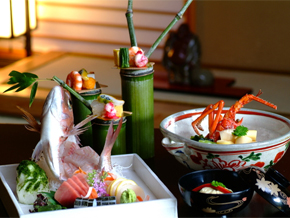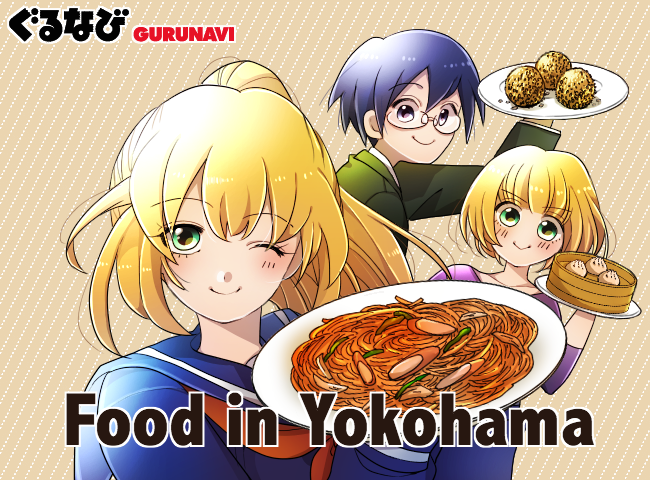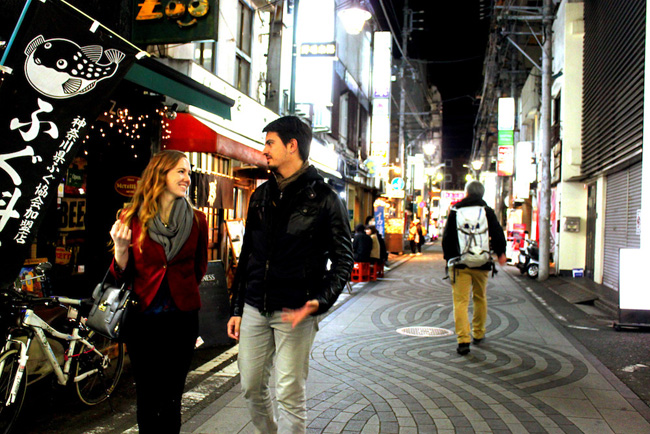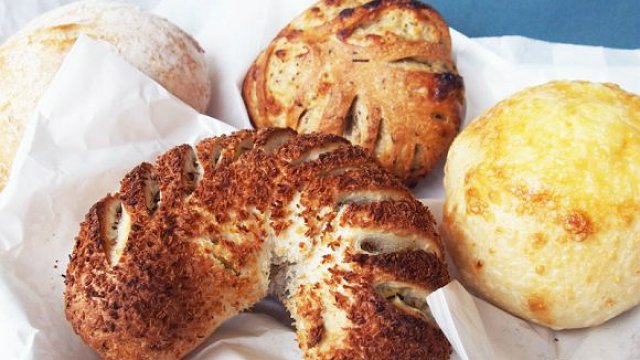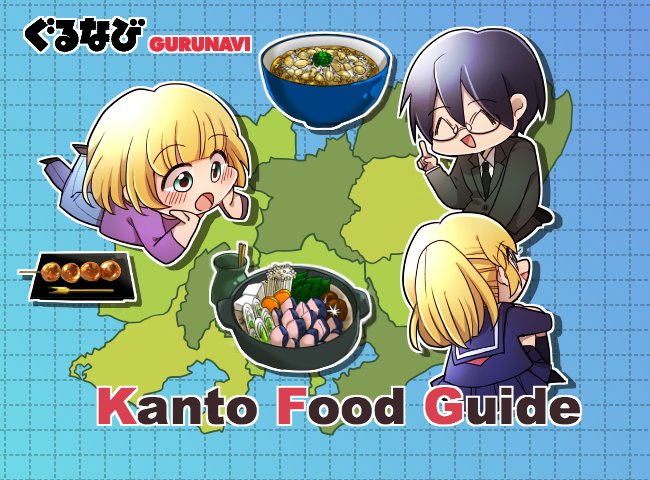Summary of Food Culture in Yokohama
Yokohama is proud to announce that 17 of its superb restaurants have been selected for a place in the "MICHELIN Guide Tokyo Yokohama Shonan 2013"!
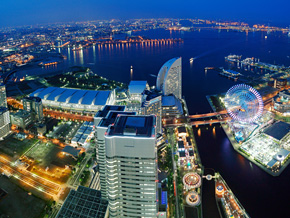 The MICHELIN Guide, considered as the benchmark in international gourmet dining, has chosen Yokohama as one of the world's gourmet cities, and recognized it with its renowned star-rating system for culinary excellence.
The MICHELIN Guide, considered as the benchmark in international gourmet dining, has chosen Yokohama as one of the world's gourmet cities, and recognized it with its renowned star-rating system for culinary excellence.
Since the opening of the port in 1859, Yokohama has served as a gateway to the outside world, a gateway through which overseas influences have subsequently flowed into the city and spread throughout Japan. It was through Yokohama that many novelties were introduced to Japan, and this has made the city the cradle of Japan's modernization. It is also a process that has turned the city into the cosmopolitan place it is today, a home for more than 3.6 million people and the second largest city in Japan. As a base for international trade and cultural exchange, Yokohama has absorbed a wide array of cultural influences, giving the city's food culture a distinctly international flavor.
For more information on Yokohama, please visit the official site:
Enjoy Yokohama Food Culture in Yokohama
Yokohama Chinatown
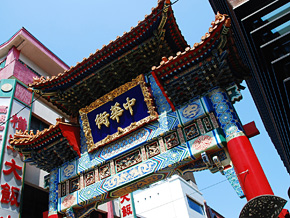 The symbol of Yokohama's international food culture is its Chinatown. Although there are other significant Chinatowns around the world, the scale of Yokohama Chinatown makes it a special place. Stretching 500 meters in all four points of the compass from its center, Yokohama Chinatown boasts over 500 stores, making it the largest in Asia and one of the largest in the world. The origins of Yokohama Chinatown date back to 1859, the year the city first welcomed Chinese merchants when the port opened. In those days the Japanese locals had no knowledge about western languages or business customs, but some of the Chinese settlers could speak these languages and write Chinese characters to communicate with the Japanese locals. As trade facilitators, these Chinese settlers played an important role in trade between Japan and western countries. This enabled them to create their own unique community, which we see today. The visitor can enjoy many famous Chinese restaurants serving Cantonese, Szechuan, Beijing, and Shanghai dishes.
The symbol of Yokohama's international food culture is its Chinatown. Although there are other significant Chinatowns around the world, the scale of Yokohama Chinatown makes it a special place. Stretching 500 meters in all four points of the compass from its center, Yokohama Chinatown boasts over 500 stores, making it the largest in Asia and one of the largest in the world. The origins of Yokohama Chinatown date back to 1859, the year the city first welcomed Chinese merchants when the port opened. In those days the Japanese locals had no knowledge about western languages or business customs, but some of the Chinese settlers could speak these languages and write Chinese characters to communicate with the Japanese locals. As trade facilitators, these Chinese settlers played an important role in trade between Japan and western countries. This enabled them to create their own unique community, which we see today. The visitor can enjoy many famous Chinese restaurants serving Cantonese, Szechuan, Beijing, and Shanghai dishes.
Japanese-style Western dishes
When Yokohama's port opened to the outside world, local farmers began cultivating cabbages, tomatoes and onions, and raising livestock to feed the population of Westerners residing in the city's foreign settlement. The presence of these new ingredients, coupled with influence from the residents themselves, made Yokohama one of the cradles for the emergence of Japanese-style Western dishes.
"Gyunabe" (Beef pot dish)
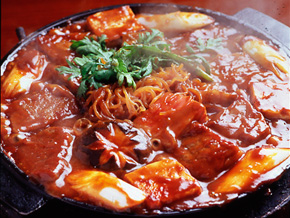 The "gyunabe" (beef pot dish) originated in Yokohama. In Japan, Buddhist teaching had prohibited eating the meat of four-legged animals up until the Edo Period. When Yokohama Port was opened in 1859, Japanese food culture became influenced by the foreign settlers' meat-intensive diet. People started to eat boiled beef with traditional Japanese seasonings such as soy sauce, tailoring the dishes to the Japanese palate.
The "gyunabe" (beef pot dish) originated in Yokohama. In Japan, Buddhist teaching had prohibited eating the meat of four-legged animals up until the Edo Period. When Yokohama Port was opened in 1859, Japanese food culture became influenced by the foreign settlers' meat-intensive diet. People started to eat boiled beef with traditional Japanese seasonings such as soy sauce, tailoring the dishes to the Japanese palate.
"Napolitan" (Yokohama-born Pasta dish)
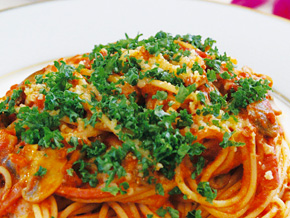 A popular pasta dish, the Napolitan is also considered to have its roots in Yokohama. Shigetada Irie, the chef de cuisine at the Hotel New Grand in Yokohama, was inspired by the requests from overseas guests to create a spaghetti dish featuring tomato ketchup. The Napolitan generally consists of spaghetti, tomato ketchup or a tomato-based sauce, onion, mushrooms, green peppers, sausage and bacon.
A popular pasta dish, the Napolitan is also considered to have its roots in Yokohama. Shigetada Irie, the chef de cuisine at the Hotel New Grand in Yokohama, was inspired by the requests from overseas guests to create a spaghetti dish featuring tomato ketchup. The Napolitan generally consists of spaghetti, tomato ketchup or a tomato-based sauce, onion, mushrooms, green peppers, sausage and bacon.
"Sanma-men" (Yokohama local Ramen dish)
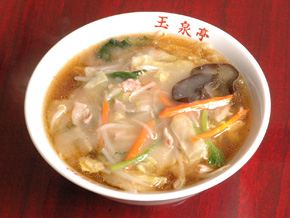 This famous Yokohama ramen dish consists of noodles in a hot soy sauce broth, covered in stir-fried vegetables, prominently bean sprouts.
This famous Yokohama ramen dish consists of noodles in a hot soy sauce broth, covered in stir-fried vegetables, prominently bean sprouts.
"Food Theme Park"
 Yokohama provides a host of entertainment facilities where you can enjoy an array of different foods and experience many cultural events. Shin-Yokohama Raumen Museum is the world's first food amusement park based on the theme of ramen. Ramen is a very popular Japanese noodle dish, which was originally introduced from China. The amusement park gives you opportunities to learn about the history of ramen, gain a general knowledge of the dish, and sample some of the well-loved local variations of the noodles from throughout Japan. On the two basement floors, you can explore a replica of some streets and houses in 1950s Tokyo. Kirin Yokohama Beer Village is a beer lover's dream - a beer factory with restaurants. Yokohama is known as the home of the Japanese beer industry. The Beer Village features a restaurant serving a variety of freshly brewed beers, and a pub space with original beers. The brewery tour introduces you to the history of beer and gives you a chance to observe the beer production process. Cupnoodles Museum is a food education facility showcasing various cup noodle displays. It also provides a do-it-yourself experience, which enables you to enjoy a sense of discovery and exercise your inventiveness by mixing and matching various soups and ingredients to create your vey own unique cup noodle. The museum also contains the Cupnoodles Park, where you can experience how Cupnoodles products are manufactured by turning into a noodle and going through the whole production process from the factory to packaging and shipment.
Yokohama provides a host of entertainment facilities where you can enjoy an array of different foods and experience many cultural events. Shin-Yokohama Raumen Museum is the world's first food amusement park based on the theme of ramen. Ramen is a very popular Japanese noodle dish, which was originally introduced from China. The amusement park gives you opportunities to learn about the history of ramen, gain a general knowledge of the dish, and sample some of the well-loved local variations of the noodles from throughout Japan. On the two basement floors, you can explore a replica of some streets and houses in 1950s Tokyo. Kirin Yokohama Beer Village is a beer lover's dream - a beer factory with restaurants. Yokohama is known as the home of the Japanese beer industry. The Beer Village features a restaurant serving a variety of freshly brewed beers, and a pub space with original beers. The brewery tour introduces you to the history of beer and gives you a chance to observe the beer production process. Cupnoodles Museum is a food education facility showcasing various cup noodle displays. It also provides a do-it-yourself experience, which enables you to enjoy a sense of discovery and exercise your inventiveness by mixing and matching various soups and ingredients to create your vey own unique cup noodle. The museum also contains the Cupnoodles Park, where you can experience how Cupnoodles products are manufactured by turning into a noodle and going through the whole production process from the factory to packaging and shipment.
"Restaurants and bars boasting wonderful night views"
Yokohama has restaurants and bars where you can enjoy fantastic night views of an ocean of light while dining and drinking. The scenery of the illuminated Yokohama Bay Bridge offers a romantic atmosphere for guests, while from a seat in one of the sky lounges you can sip a drink as you take a bird's eye view of the myriad of streetlights that lace their way across the city's nightscape. The lighting and atmosphere of each restaurant and lounge are uniquely designed, and provide an indoor environment, suited to light dishes, full-course dinners, or just a quiet drink.
"Yokohama's Cocktails"
 Japan's first cocktail, "Bamboo," was originally invented in Yokohama in the year 1889. This dry cocktail blends dry sherry and dry vermouth to create an ideal pre-dinner appetizer. The "Yokohama" is a blend of gin and vodka with an anise fragrance and oriental flavor, said to have been invented on an ocean liner. The "Yokohama Beauty" was invented by the mayor of Yokohama in 2004, and is just another of the twelve types of seasonal Yokohama cocktails. Yokohama Birthday Cocktails.
Japan's first cocktail, "Bamboo," was originally invented in Yokohama in the year 1889. This dry cocktail blends dry sherry and dry vermouth to create an ideal pre-dinner appetizer. The "Yokohama" is a blend of gin and vodka with an anise fragrance and oriental flavor, said to have been invented on an ocean liner. The "Yokohama Beauty" was invented by the mayor of Yokohama in 2004, and is just another of the twelve types of seasonal Yokohama cocktails. Yokohama Birthday Cocktails.
"Yokohama Beer"
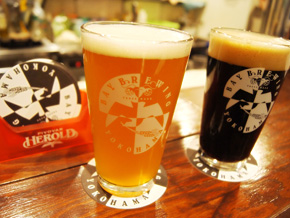 Yokohama is quite possibly Beer City Japan. It is home to Japan's first commercial brewery, known today as Kirin. It also boasts several popular craft breweries - small-scale operations brewing specialty beers. And the central area of Yokohama has a high concentration of unique beer bars and restaurants serving these specialty beers, making it a Japanese beer lover's paradise.
Yokohama is quite possibly Beer City Japan. It is home to Japan's first commercial brewery, known today as Kirin. It also boasts several popular craft breweries - small-scale operations brewing specialty beers. And the central area of Yokohama has a high concentration of unique beer bars and restaurants serving these specialty beers, making it a Japanese beer lover's paradise.
"Yokohama's Cafes"
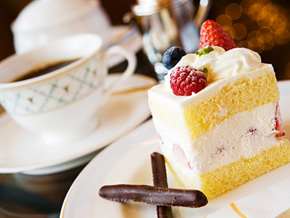 As soon as Yokohama Port was opened, the city was quick to embrace foreign food culture. The city is also known as the birthplace of Japanese ice cream, and is home to numerous long-established western and oriental patisseries. These restaurants and cafes serve authentic western, Japanese, or Chinese sweets, the latter of which are concentrated in Yokohama Chinatown. Patisseries and cafes also line the streets of the Yamate, Motomachi Shopping Street, and Isezaki-cho areas.Some are located near famous sightseeing spots, beautiful parks, or western-style buildings, while others are quietly tucked away in little alleys. Why not enjoy coffee, tea, and sweets in one of these cafes while viewing the beautiful terraces or attractive gardens? A Japanese tea cafe serves sweets, together with Japanese tea (natural leaf and refined green tea).
As soon as Yokohama Port was opened, the city was quick to embrace foreign food culture. The city is also known as the birthplace of Japanese ice cream, and is home to numerous long-established western and oriental patisseries. These restaurants and cafes serve authentic western, Japanese, or Chinese sweets, the latter of which are concentrated in Yokohama Chinatown. Patisseries and cafes also line the streets of the Yamate, Motomachi Shopping Street, and Isezaki-cho areas.Some are located near famous sightseeing spots, beautiful parks, or western-style buildings, while others are quietly tucked away in little alleys. Why not enjoy coffee, tea, and sweets in one of these cafes while viewing the beautiful terraces or attractive gardens? A Japanese tea cafe serves sweets, together with Japanese tea (natural leaf and refined green tea).




